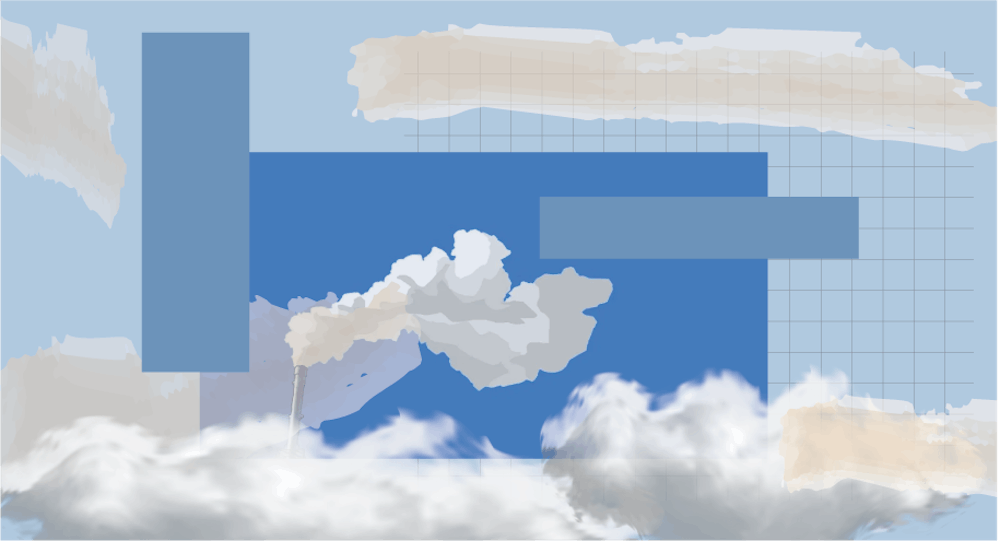No one knows who Parannoul is. Born and raised in Korea, the musician composes and produces all of his work in his bedroom before uploading the finished products to Bandcamp—no record labels needed. Although he humbly describes himself as “just a student writing music,” his sophomore LP To See the Next Part of the Dream is recognized as one of the best shoegaze albums in aggregate review websites such as Rate Your Music and Album of the Year. Considering the album is sonically similar to the discographies of classic bands such as My Bloody Valentine and Slowdive, it’s no surprise to see it receive such a positive reception. However, To See the Next Part of the Dream is still uniquely Parannoul’s, focusing on the moments in his life that led to the creation of his deceivingly dark album.
The first track “Beautiful World” is a perfect representation of the shoegaze genre where a thick layer of banging drums and distorted guitar riffs drown out Parannoul’s vocals. Without careful attention to the lyrics, the instrumentation evokes feelings of nostalgia and even optimism, but Parannoul’s writing is melancholic and heartbreaking. The first verse introduces the dream of reinvention and metamorphosis that is continually reimagined and expanded throughout the album. As he looks back on his childhood memories, Parannoul begins an endless stream of self–criticism, wishing his “young and stupid days” would “disappear forever.” The contrast between the hypnotizing production and the depressing lyrics is jarring, but this divergence describes exactly what Parannoul yearns for: success and accomplishment in his life. Depicting himself as “below average in height and appearance and everything,” Parannoul feels that he has already accepted his fate, which is hindering him from achieving his ambitions.
Conflicting attitudes are still present on “Excuse,” a devastating track that highlights Parannoul’s insecurity regarding his feelings. He believes that his "goals are becoming more and more clear / But [his] purposes are becoming more and more meaningless." These lyrics echo the fight Parannoul faces as he struggles to find the balance between his desires and his abilities. Although he acknowledges his misguided view of the world (“I was just a child to say I was all grown up"), Parannoul is still unable to find stability, resigning himself to a pessimistic lifestyle.
“White Ceiling” takes the already tumultuous nature of Parannoul’s life and leads the listener on a ten–minute journey through the inconsistencies of time. The song emphasizes Parannoul’s distortion of his past and the disproportionate effect it has on his present self. To him, nothing has changed “even on Sunday morning / even on Monday morning / even on Friday morning.” He feels confined by his perceived deficiencies, unable to escape and rise above the white ceiling that he wakes up to every morning. Remarking that “I’ve been used to my room temperature for a long time now,” he is unable to cope with his past mistakes because they are so strong, preventing him from growing in the future. On his Bandcamp page, Parannoul mentions that his “body is an adult but [his] mind is still a child,” demonstrating, from his point of view, how his physical and mental health are aging at two completely different time intervals.
Notably different from the rest of the album, the final track “I Can Feel My Heart Touching You” explores Parannoul’s thoughts as if he is living out his dream. Though he concedes that freedom must come with “another step forward,” he considers how it might feel to be devoid of any hardships. Given his natural tendency to succumb to stagnation, this is just a short–lived moment. This track is also the only one with pleasant imagery: Parannoul recognizes how the “green grasslands” and “blue sunsets” differ from the dullness of his room. Finally, Parannoul compares this experience to “[flying] one day, just like those birds,” referring to the “White Ceiling” that cannot entrap him anymore in his dream. Birds are also present on the album cover, flying above a factory spewing pollution; because Parannoul’s mind is engulfed by the smoke of his past, he can never feel completely unrestrained.
Shoegaze is defined by its ethereal characteristics, and To See the Next Part of the Dream focuses on an unachievable dream, one that cannot be attained with just hard work and persistence. When expressing his failures that have built up over time, Parannoul does not hope to move forward; rather, he lays out all the things that have led him to defeat. Given the tone of the entire album, To See the Next Part of the Dream concluding with Parannoul living out his dream is surprising. In a way, however, he has already achieved one of his dreams: He wanted to “leave a little trace of my own” and “[to be] talked to for the rest of one’s life.” The anonymous artist may feel isolated and lonely, but the relatability of his album will keep him in the memories of many.

